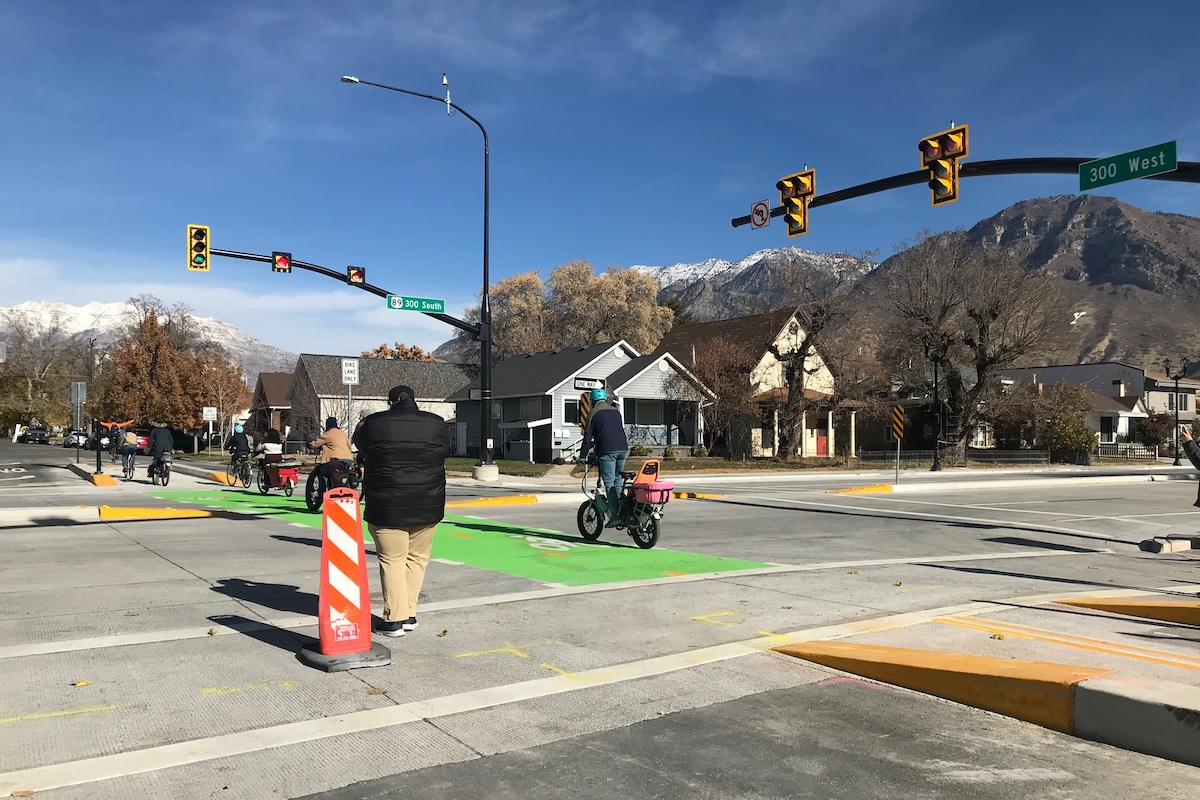SR 23 is a six-lane highway. In the area where the project is taking place, the average daily traffic count is approximately 116,000 vehicles, with nearly 4 percent being truck traffic. The project came about when the Caltrans Pavement Condition Survey (PCS) Inventory indicated that the existing pavement on an 8.1-mile stretch of SR 23 had minor structural problems, including cracks, potholes, and distressed slabs. The report noted that continued deterioration of the pavement will decrease ride quality. Caltrans conducted a field investigation that confirmed PCS’s findings.
The SR 23 project will replace pavement on the outer two lanes of the highway to provide a service life of 40 years. In addition to the pavement work, the team is rehabbing the on- and off-ramps, connectors, and adjacent shoulders. Finally, slabs will be replaced on the inner lane in both directions where needed.
Existing curb ramps will be upgraded in 36 locations to comply with the Americans with Disabilities Act and approach slabs and bridge rails will be replaced at five locations. Signal lights will also be upgraded.
“Complying with the statewide mandates and keeping the team onsite and healthy was a challenge for the contractor,” says Jim Medina, a Public Information Officer for Caltrans – District 7. “It was essential to do so for the safety of the team and to keep the project moving forward as scheduled.”

| Your local Volvo Construction Equipment dealer |
|---|
| Faris Machinery |
Regarding infrastructure projects, the pandemic had some positive elements. “California’s temporary stay-at-home requirement significantly reduced daily traffic,” Medina says. “Crews were allowed to begin work earlier in the evening because the commuter rush hour was greatly reduced.” The extended overnight hours increased productivity.
“It was a beneficial because the company is very familiar with the community,” Medina says.
Security Paving Company has worked on several Caltrans projects in the past. “We have a good working relationship with Security Paving,” Medina says. “They’re professional, responsive, and have the manpower to meet the schedule the department sets.”
The project began in July 2020 and was scheduled to be complete this fall. However, Security Paving has managed to accelerate the schedule. The anticipated completion date for the project is several months ahead of schedule, with most work expected to be complete by March before proceeding with punch list items. “Security Paving was able to make great progress in the early stages of the project when traffic was significantly lower than normal,” Medina says.
Another way the team moved the project forward was by having a concrete batch plant located and operating in the highway median. “This allows trucks convenient in and out access to the highway,” says Medina. It also cuts down on the extra traffic and minimizes disturbances on SR 23 and surrounding roadways.

| Your local Gomaco dealer |
|---|
| Faris Machinery |
Throughout construction, three lanes in each direction have remained open, along with an auxiliary lane incorporated to shift traffic patterns as needed during construction. However, Medina notes, the contractor has periodically had to close lanes and or ramps for extended periods, including 55-hour weekend closures.
According to the bill’s website, “This bill created the Road Maintenance and Rehabilitation Program to address deferred maintenance on the state highway system and the local street and road system. The bill required the California Transportation Commission to adopt performance criteria, consistent with a specified asset management plan, to ensure efficient use of certain funds available for the program.”
“Road projects progress through construction phases more quickly based on the availability of SB 1 funds, including projects that are partially funded by SB 1,” Medina says.
When the SR 23 project is complete, the repairs will extend the life of the pavement, provide a smoother and safer ride, and require minimal maintenance expenditure by the department. The road will also be more reliable due to the upgraded drainage systems. Pedestrians can appreciate the ADA curbs. This is one stretch of highway that Caltrans and commuters can be confident in the service for a long time.










































































